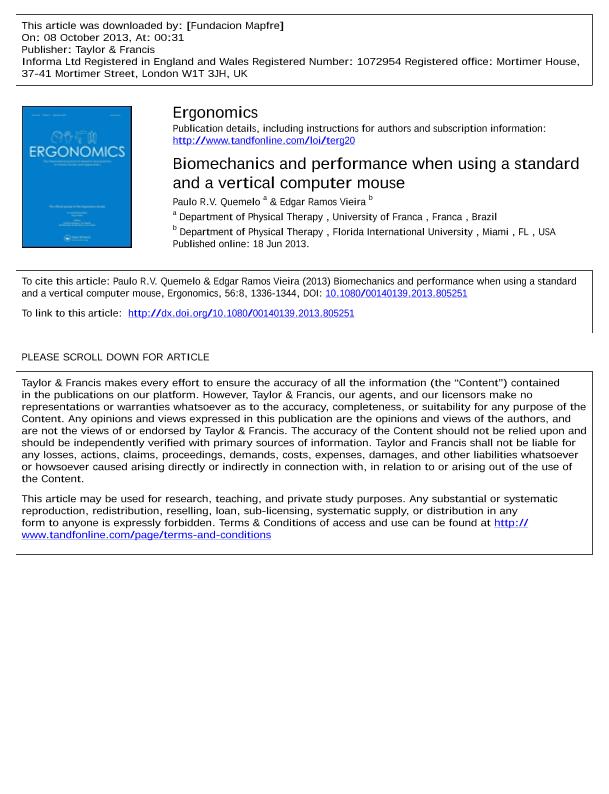Biomechanics and performance when using a standard and a vertical computer mouse

Contenido multimedia no disponible por derechos de autor o por acceso restringido. Contacte con la institución para más información.
| Tag | 1 | 2 | Valor |
|---|---|---|---|
| LDR | 00000cab a2200000 4500 | ||
| 001 | MAP20130032702 | ||
| 003 | MAP | ||
| 005 | 20131008170709.0 | ||
| 008 | 131008e20130805esp|||p |0|||b|spa d | ||
| 040 | $aMAP$bspa$dMAP | ||
| 084 | $a875 | ||
| 100 | 1 | $0MAPA20130013961$aQuemelo, Paulo R.V. | |
| 245 | 1 | 0 | $aBiomechanics and performance when using a standard and a vertical computer mouse$cPaulo R.V. Quemeloa, Edgar Ramos Vieira |
| 520 | $aObjective: to compare the biomechanics and performance while using a vertical computer mouse (VM) and a standard mouse (SM). Methods: muscle activation (electromyography), forearm movements (electrogoniometers), performance (Fitts' Law test) and satisfaction (questionnaire) of 16 subjects were evaluated. Results: there were significant differences between the VM and the SM, respectively, on motion (28° vs. 42° pronation, p = 0.001; 5° ulnar vs. 7° radial deviation, p = 0.016) and muscle activity (13% vs. 16% of extensor carpi activity, p = 0.006; 10% vs. 13% extensor digitorum activity, p = 0.001). VM user satisfaction was good (68); however, time to target was longer (4.2 vs. 3.4 s, p < 0.001). Conclusions: using the VM decreased wrist pronation and lowered wrist extensor muscle activity, but additional training and familiarisation time may be required to improve user performance. | ||
| 773 | 0 | $wMAP20100019818$tErgonomics : the international journal of research and practice in human factors and ergonomics$dOxon [United Kingdom] : Taylor & Francis, 2010-$x0014-0139$g05/08/2013 Volumen 56 Número 8 - agosto 2013 , p. 1336-1344 |

